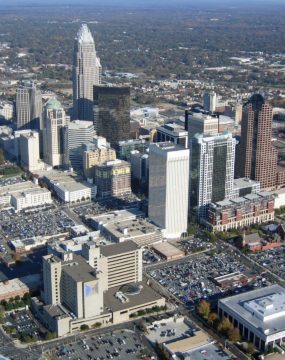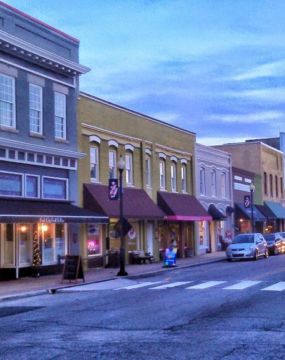Carolina Demographics
Keep up with our latest demographic insights

There is a newer version of this blog post available: North Carolina’s Hispanic Community: 2019 Snapshot Series note: This post and the next few in the series are the outgrowth of a presentation jointly developed with Dr. Krista M. Perreira and presented by Dr. Perreira to the October meeting of the North Carolina Governor’s Advisory Council on Hispanic/Latino Affairs. Terminology note: The U.S. Census Bureau introduced the term Hispanic in 1980 and this is a…

It’s hard to understand and process new information if we don’t have sufficient context and grounding in basic facts. A lot of what we do at Carolina Demography is help people understand the demographic facts at hand. The facts of interest are often very straightforward: how many people live in NC, where they live, how quickly populations are changing, etc. We make sure that individuals, organizations, and policy makers understand these basics so they can…


July 2015 to July 2016 was the largest year of population growth for the state of North Carolina for any single-year period since the last decennial Census (2010). This was also the case for 124 of North Carolina’s municipalities, including several with previously slim or even declining population growth. These places are labeled and represented by colored markers on the Story Map below. The table accompanying each point compares the numeric and percentage growth year-to-year…


In the next few months, the U.S. Census Bureau is releasing multiple data products that will provide new years of data, as well as some new detail not currently available. Here are the four most valuable updates for better understanding NC and its changing demographics: New county-to-county migration flow tables updated with 2011-15 data. The release of these tables and the update to the Census Flows Mapper web application will be the first time that non-overlapping…


Population can grow—or decline—from one of two components of change: net migration (both domestic and international) or natural growth (births and deaths). Both components have contributed to North Carolina’s population growth. Every year since 1980, North Carolina has had more births than deaths, meaning the population has grown from natural increase. The level of natural increase peaked in the late 2000s and has since declined significantly, reflecting the combined impact of fertility declines and population…


Despite substantial growth in some areas of the state, a large portion of North Carolina has seen little to no population increase. Of North Carolina’s 553 municipalities, 225, or about 41%, experienced population decline from 2010-2016. An additional 192 reported growth that was lower than 6.4%, the state’s growth rate since 2010. In total, three of every four North Carolina municipalities have lost population or grown slower than the state since 2010. The northeast corridor…


North Carolina’s population, much like the nation at large, is growing older and more diverse. The new 2016 detailed population estimates from the U.S. Census Bureau provide data on the age, sex, and racial/ethnic composition of state and county populations. In North Carolina, the 65 and older population grew from 1.2 million in 2010 to 1.6 million in 2016, an increase of 335,000 or 27%. As of 2016, 15.5% of North Carolina’s population was 65…



The U.S. Census Bureau recently made its 2016 population estimates available, and the topline trends for North Carolina has maintained a nearly identical trajectory as 2015. Since the last decennial Census in 2010, North Carolina has seen its urban metropolitan areas grow consistently larger, while small, often rural municipalities have struggled to maintain population. North Carolina’s two largest metropolitan statistical areas – Charlotte-Concord and the Triangle (Raleigh-Durham-Chapel Hill) – have driven much of North Carolina’s…
Net migration has been a major driver of North Carolina’s growth since 1990 and its importance will only increase in coming years. The only other potential source of growth is natural increase—births minus deaths—and this has been declining since the recession. In my recent post, I noted that even if fertility rates increase significantly, we should not expect natural increase to rebound to prior levels, largely due to the growing impacts of population aging. Although…
North Carolina’s population grew by 112,000 between 2015 and 2016, the largest single year increase since 2010, according to new data from the U.S. Census Bureau. With a growth rate of 1.1%, North Carolina’s 2015-16 growth was faster than the national growth rate (0.7%) and similar to the South’s regional rate (1.1%). Overall, North Carolina’s population has grown by 611,000 since 2010, an increase of 6.4%. The uptick in population growth was fueled by an…
Your support is critical to our mission of measuring, understanding, and predicting population change and its impact. Donate to Carolina Demography today.